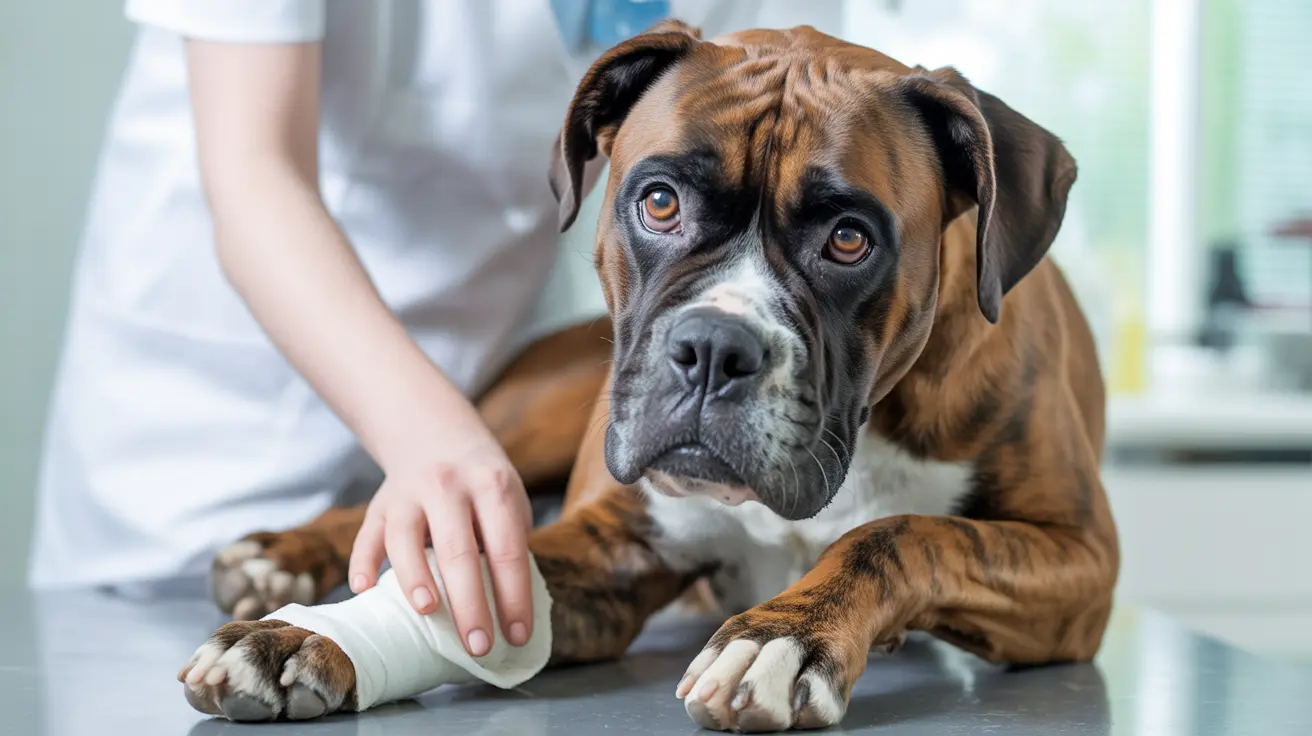When your dog develops an abscess, knowing how to provide proper care is crucial for their recovery. While professional veterinary treatment is essential for initial diagnosis and treatment, understanding proper at-home care techniques can help ensure your pet heals successfully after veterinary intervention.
This comprehensive guide will walk you through the essential steps of post-veterinary abscess care, warning signs to watch for, and when immediate professional help is necessary. Remember, home care should only complement, never replace, professional veterinary treatment.
Understanding Dog Abscesses
An abscess is a painful, pus-filled pocket that develops due to infection. These can occur anywhere on your dog's body but are most commonly found in the skin, around teeth, or in anal glands. The infection typically results from bacteria entering through wounds, bites, or blocked glands.
Common causes include:
- Fight wounds or animal bites
- Infected punctures or cuts
- Dental infections
- Blocked or infected anal glands
Post-Veterinary Home Care Steps
Wound Cleaning and Management
After your veterinarian has treated the abscess, they will provide specific instructions for at-home care. This typically includes:
- Cleaning the area with prescribed solutions
- Applying warm compresses as directed
- Keeping the wound clean and dry
- Preventing your dog from licking the area
Medication Administration
Following your vet's treatment plan is crucial for proper healing. This may include:
- Giving prescribed antibiotics on schedule
- Administering pain medications as directed
- Applying topical treatments if prescribed
- Completing the full course of all medications
Monitoring and Warning Signs
During the healing process, watch for these concerning symptoms:
- Increased swelling or redness
- Excessive discharge or bleeding
- Fever or lethargy
- Loss of appetite
- Strong odor from the wound
- Signs of pain or discomfort
Prevention Strategies
To help prevent future abscesses:
- Clean any wounds promptly
- Maintain regular dental care
- Schedule routine anal gland checks if recommended
- Keep vaccinations current
- Monitor your dog during play with other animals
When to Seek Emergency Care
Contact your veterinarian immediately if you notice:
- Rapid swelling or spreading redness
- Significant pain or distress
- Changes in behavior or appetite
- Difficulty breathing
- Collapse or disorientation
Frequently Asked Questions
How can I safely clean and care for my dog's abscess at home after veterinary treatment?
Follow your veterinarian's specific instructions for cleaning the area, typically using prescribed antiseptic solutions. Keep the area clean and dry, and use an e-collar if necessary to prevent licking. Apply warm compresses only if directed by your vet.
What are the signs that indicate my dog's abscess needs immediate veterinary attention?
Seek immediate veterinary care if you notice rapid swelling, excessive pain, spreading redness, fever, lethargy, loss of appetite, or foul-smelling discharge. These could indicate a worsening infection requiring urgent medical intervention.
Can I treat a dog's abscess naturally at home using remedies like warm compresses or honey?
Never attempt to treat an abscess solely with home remedies. While warm compresses may be beneficial after veterinary treatment, natural remedies alone are insufficient and potentially dangerous. Always seek professional veterinary care first.
Why shouldn't I try to drain or lance my dog's abscess by myself?
Attempting to drain an abscess at home can drive the infection deeper, cause severe pain, and lead to serious complications including sepsis. Only licensed veterinarians should perform drainage procedures in a sterile environment.
What is the best way to prevent abscesses in dogs, especially in common areas like skin and anal glands?
Prevent abscesses by promptly cleaning wounds, maintaining regular dental care, scheduling routine anal gland checks if recommended, and keeping vaccinations current. Monitor your dog during play with other animals to prevent bite wounds.






